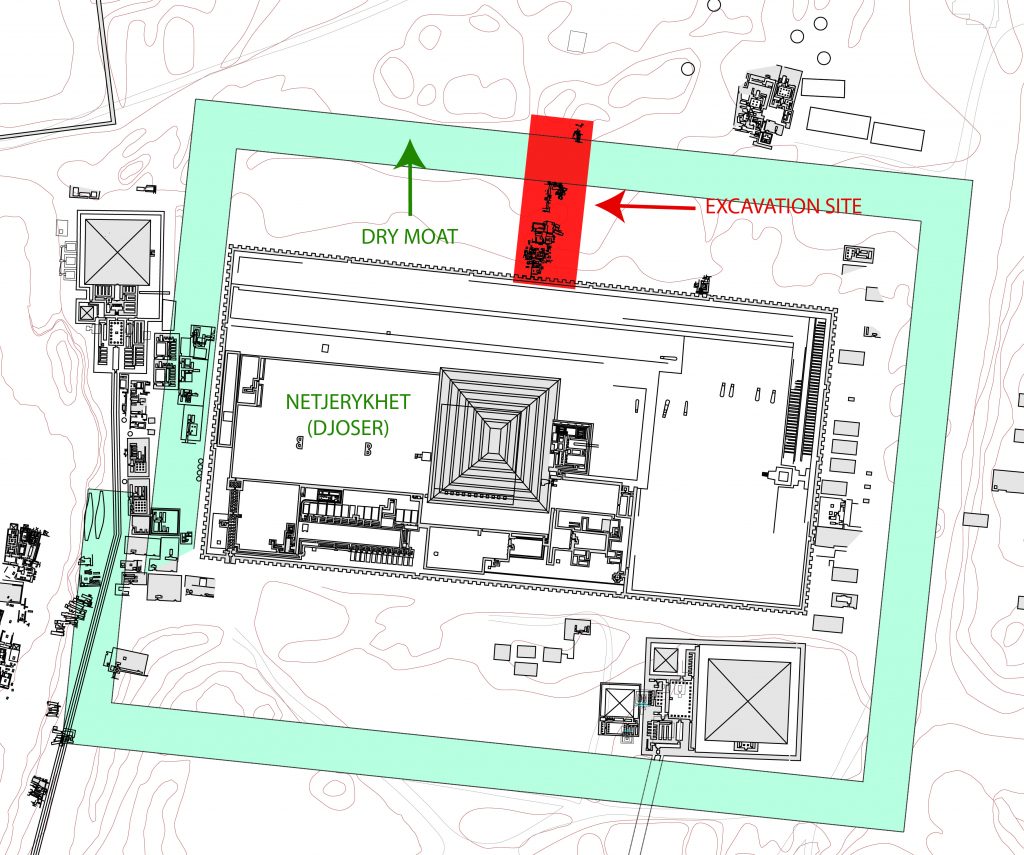The Dry Moat, is a vast trench hewn in the bedrock around the funerary complex of Netjerykhet, measuring approximately 750 x 600 m. The feature has been first identified by Nabil Swelim in 1985 and its presence on the western side of the complex has been confirmed in the course of our excavation work, which yielded new data concerning its practical and ideological significance as a part of the royal funerary monument.

See also:
N. Swelim, The great Dry Moat surrounding the step pyramid complex, 4th International Congress of Egyptologists, Abstract of Papers, Munich 1985
N. Swelim, The Dry Moat of the Netjerykhet Complex, Pyramid Studies and Other Essays Presented to I.E.S. Edwards, J. Baines, T.G.H. James, A. Leahy, A.F. Shore (eds.), London 1988, pp. 12-22
N. Swelim, The Dry Moat, the South Rock Wall Of the Inner South Channel, Timelines, Studies in Honour of Manfred Bietak, E. Czerny, et al. (eds.), OLA 149, 2006, pp. 363-376 E. Czerny, et al. (eds.), OLA 149, 2006, pp. 363-376
T. Herbich, A. Jagodziński, Geophysical Investigation of the Dry Moat of the Netjerykhet Complex in Saqqara, Man – Millennia – Environment. Studies in Honour of Romuald Schild, Z. Sulgostowska, A.J. Tomaszewski (eds.), Warsaw 2008, pp. 273-279
Myśliwiec K., The “Dry Moat” west of the Netjerykhet enclosure, The Old Kingdom Art and Archaeology, Proceedings of the Conference held in Prague, May 31 – June 4, 2004, M. Bárta (ed.), Prague 2006, pp. 233-237
Kuraszkiewicz K., Afterworld for Netjerykhet, Old Kingdom, New Perspectives. Egyptian Art and Archaeology 2750-2150 BC, N. Strudwick, H. Strudwick (eds.), Oxford 2011, pp. 139-142

